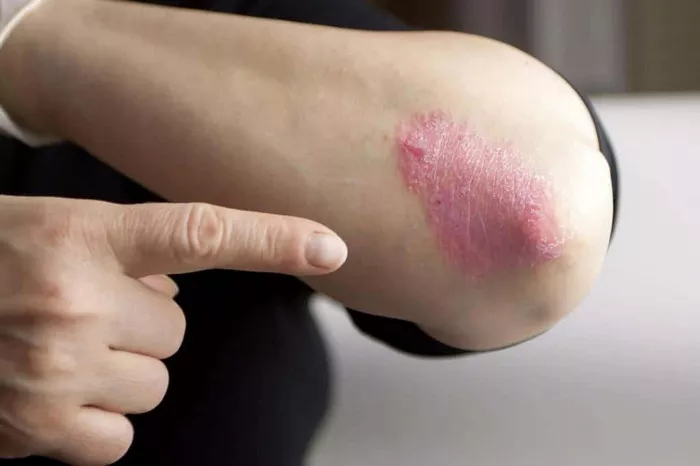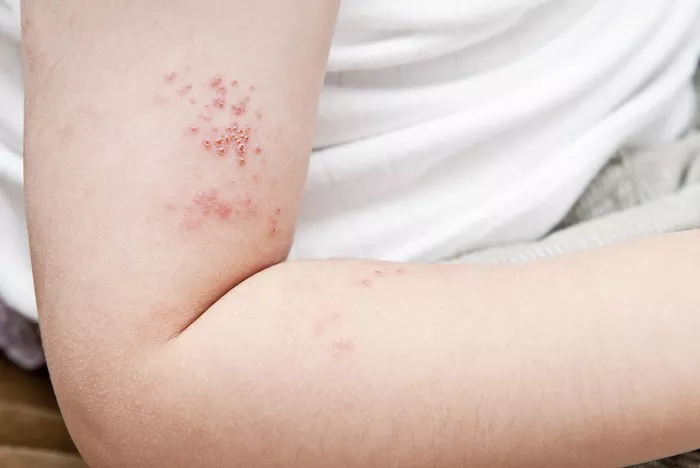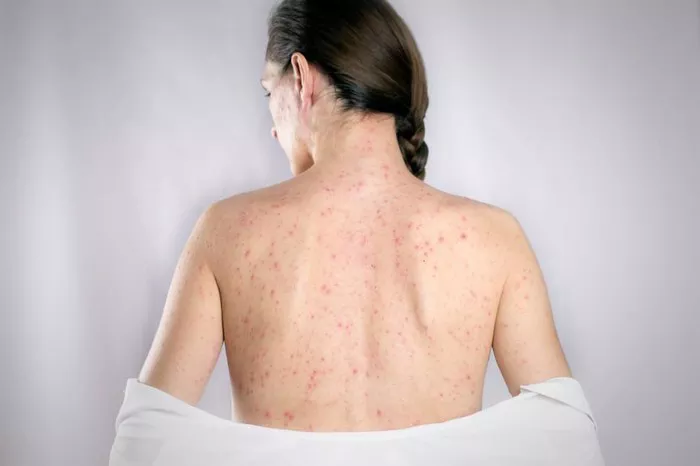Psoriasis is a chronic skin condition that affects millions of people worldwide. Characterized by red, scaly patches, it can cause significant discomfort and impact the quality of life. While there is no cure for psoriasis, various treatments can help manage symptoms. Among these treatments, topical steroids are often the first line of defense. This article will explore the six best topical steroids for psoriasis, providing an in-depth look at their effectiveness, usage, and potential side effects.
Understanding Psoriasis and Its Treatment
Psoriasis is an autoimmune condition where the skin cells multiply at an accelerated rate, leading to the buildup of plaques. These plaques can be itchy, painful, and often lead to emotional distress due to their appearance. The exact cause of psoriasis remains unknown, but it is believed to be a combination of genetic and environmental factors. Treatments aim to reduce inflammation, slow down cell turnover, and manage symptoms.
Topical steroids, also known as corticosteroids, are commonly prescribed for psoriasis. They work by reducing inflammation and suppressing the immune response. The potency of topical steroids ranges from mild to very potent, and they are chosen based on the severity of the condition and the area of the body affected. Here are the six best topical steroids for psoriasis.
1. Clobetasol Propionate
Clobetasol propionate is one of the most potent topical steroids available and is widely used for severe psoriasis. It is effective in reducing inflammation and itching within a short period.
How It Works
Clobetasol propionate works by mimicking the effects of naturally occurring corticosteroids. It reduces the release of substances in the body that cause inflammation, redness, and swelling.
Usage
This steroid is available in various forms, including cream, ointment, gel, and foam. It is typically applied to the affected areas once or twice daily. Due to its potency, it is usually prescribed for short-term use, often no more than two weeks.
Side Effects
Potential side effects include skin thinning, stretch marks, and contact dermatitis. Prolonged use can lead to systemic absorption, which may cause more severe side effects like adrenal suppression. Therefore, it is crucial to follow the prescribed duration and dosage.
2. Betamethasone Dipropionate
Betamethasone dipropionate is another potent steroid commonly used for moderate to severe psoriasis. It is known for its fast-acting relief of symptoms.
How It Works
Similar to clobetasol, betamethasone dipropionate works by reducing inflammation and immune response. It decreases the production of inflammatory chemicals in the skin.
Usage
This medication is available in creams, lotions, and ointments. It is usually applied once or twice daily. Betamethasone dipropionate is often used in combination with other treatments, such as vitamin D analogs, to enhance effectiveness.
Side Effects
Side effects can include skin irritation, dryness, and thinning of the skin. Long-term use may lead to systemic side effects, so it is important to use this medication under the guidance of a healthcare provider.
3. Triamcinolone Acetonide
Triamcinolone acetonide is a mid-potency steroid, making it suitable for mild to moderate psoriasis.
How It Works
Triamcinolone reduces inflammation and suppresses immune response by inhibiting the release of inflammatory substances.
Usage
This steroid is available in various forms, including creams, ointments, lotions, and sprays. It is typically applied two to four times daily, depending on the severity of the condition and the form used.
Side Effects
Side effects can include burning, itching, irritation, and dryness at the application site. Prolonged use can lead to skin thinning and systemic absorption, especially when used on large areas of the body or under occlusion.
4. Hydrocortisone
Hydrocortisone is a mild steroid, making it suitable for sensitive areas like the face and groin, as well as for children.
How It Works
Hydrocortisone works by reducing inflammation and itching through its anti-inflammatory properties.
Usage
This steroid is available in creams, lotions, and ointments. It is usually applied two to three times daily. Hydrocortisone is often recommended for long-term management due to its mild potency.
Side Effects
Side effects are generally mild and may include skin irritation, dryness, and stinging. Due to its lower potency, it has a lower risk of causing significant side effects, making it a safer option for long-term use.
SEE ALSO: Is Psoriatic Arthritis a Serious Autoimmune Disease?
5. Desonide
Desonide is a low-potency steroid that is effective for treating mild psoriasis, especially in sensitive skin areas.
How It Works
Desonide reduces inflammation and itching by inhibiting the release of inflammatory chemicals in the skin.
Usage
This steroid is available in creams, lotions, ointments, and foams. It is typically applied two to three times daily. Due to its low potency, it is suitable for use on the face and other sensitive areas.
Side Effects
Side effects are generally mild and can include burning, stinging, and dryness. Desonide is less likely to cause significant side effects, making it suitable for long-term management of psoriasis in sensitive areas.
6. Mometasone Furoate
Mometasone furoate is a mid-potency steroid that is effective for treating moderate psoriasis.
How It Works
Mometasone works by reducing inflammation and immune response in the affected areas.
Usage
This medication is available in creams, ointments, and lotions. It is typically applied once daily, which can improve patient compliance compared to medications requiring more frequent application.
Side Effects
Side effects can include skin irritation, dryness, and thinning. Mometasone is less likely to cause significant systemic side effects compared to more potent steroids, making it a good option for moderate psoriasis.
Choosing the Right Topical Steroid
The choice of a topical steroid depends on several factors, including the severity of the psoriasis, the area of the body affected, the patient’s age, and previous treatment responses. Here are some considerations:
1. Severity of Psoriasis: More potent steroids like clobetasol propionate and betamethasone dipropionate are suitable for severe cases, while milder cases may be effectively managed with hydrocortisone or desonide.
2. Area of the Body: Sensitive areas like the face, groin, and armpits require milder steroids such as hydrocortisone or desonide to avoid significant side effects. For thicker skin areas like elbows and knees, more potent steroids may be needed.
3. Patient’s Age: Children and older adults are more susceptible to side effects, so milder steroids are preferred.
4. Previous Treatment Responses: If a patient has used a particular steroid without significant improvement or has experienced side effects, an alternative steroid or a different potency level may be necessary.
Combining Topical Steroids with Other Treatments
Topical steroids are often used in combination with other treatments to enhance their effectiveness and manage side effects. Some common combinations include:
1. Topical Vitamin D Analogues: Combining steroids with vitamin D analogues like calcipotriene can enhance the effectiveness of both treatments and reduce the need for high-potency steroids.
2. Topical Retinoids: Tazarotene, a topical retinoid, can be used with steroids to improve results and decrease the frequency of steroid application.
3. Phototherapy: Combining topical steroids with phototherapy can increase the effectiveness of both treatments and reduce the duration of steroid use.
4. Systemic Treatments: In severe cases, systemic treatments like biologics or oral medications may be used alongside topical steroids for comprehensive management.
Managing Side Effects of Topical Steroids
While topical steroids are effective, they can cause side effects, especially with prolonged use. Here are some strategies to minimize these risks:
1. Follow Prescribed Guidelines: Use the medication exactly as prescribed by your healthcare provider to avoid overuse.
2. Limit Use in Sensitive Areas: Avoid using high-potency steroids on sensitive areas for extended periods.
3. Monitor Skin Changes: Regularly check the treated areas for signs of side effects such as thinning, discoloration, or stretch marks.
4. Use Moisturizers: Applying moisturizers can help prevent dryness and irritation caused by steroids.
5. Take Breaks: If long-term treatment is needed, intermittent use or “steroid holidays” can help reduce the risk of side effects.
6. Regular Check-ups: Schedule regular appointments with your healthcare provider to monitor the effectiveness and any potential side effects of the treatment.
Conclusion
Topical steroids are a cornerstone in the management of psoriasis, offering relief from inflammation, itching, and redness. The choice of steroid should be tailored to the individual’s needs, considering factors such as severity, location of psoriasis, and patient characteristics. By understanding the different options and their appropriate use, patients can effectively manage their condition while minimizing potential side effects. Always consult with a healthcare provider to determine the best treatment plan for your specific situation.
Related Topics:



























